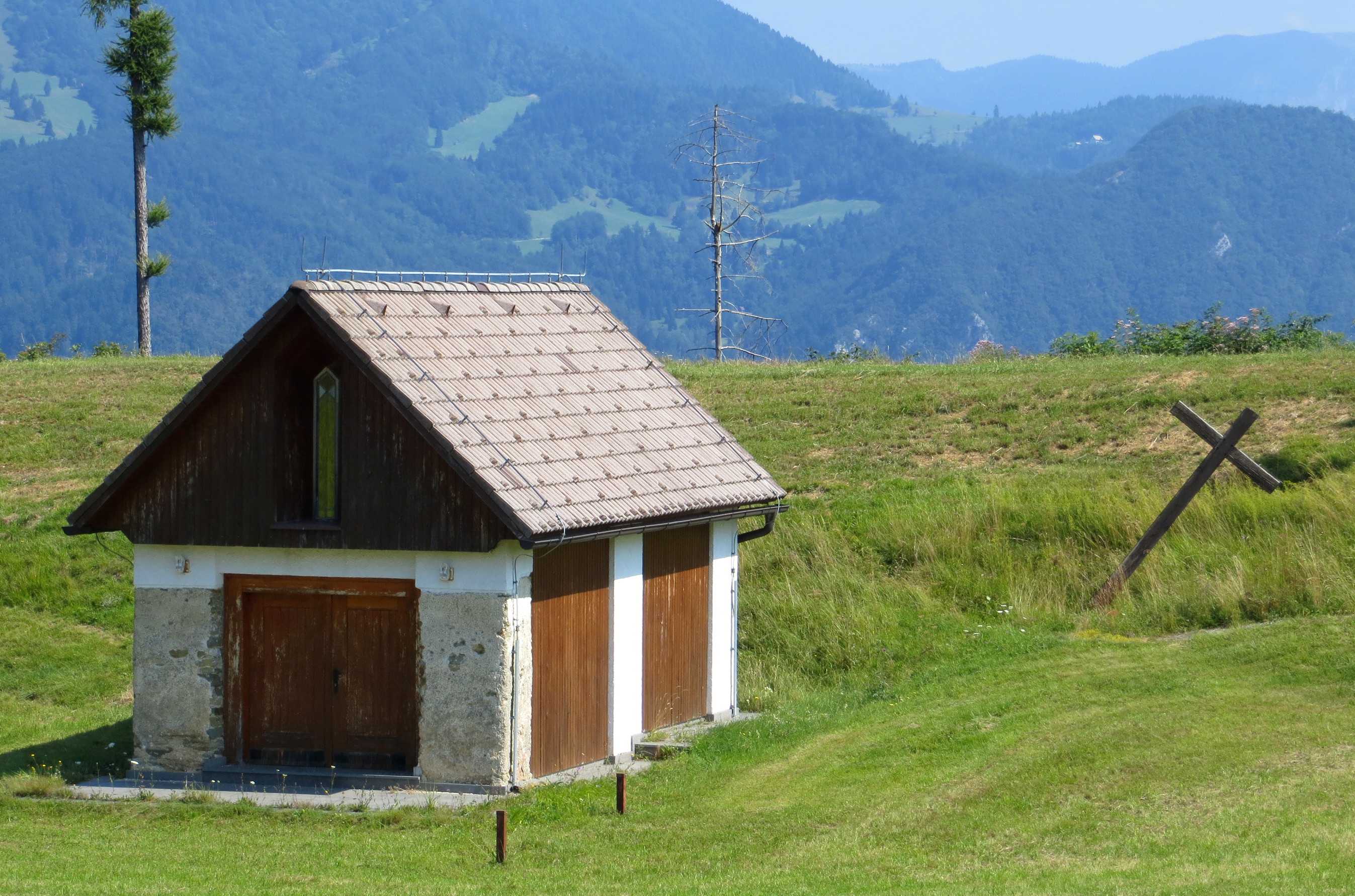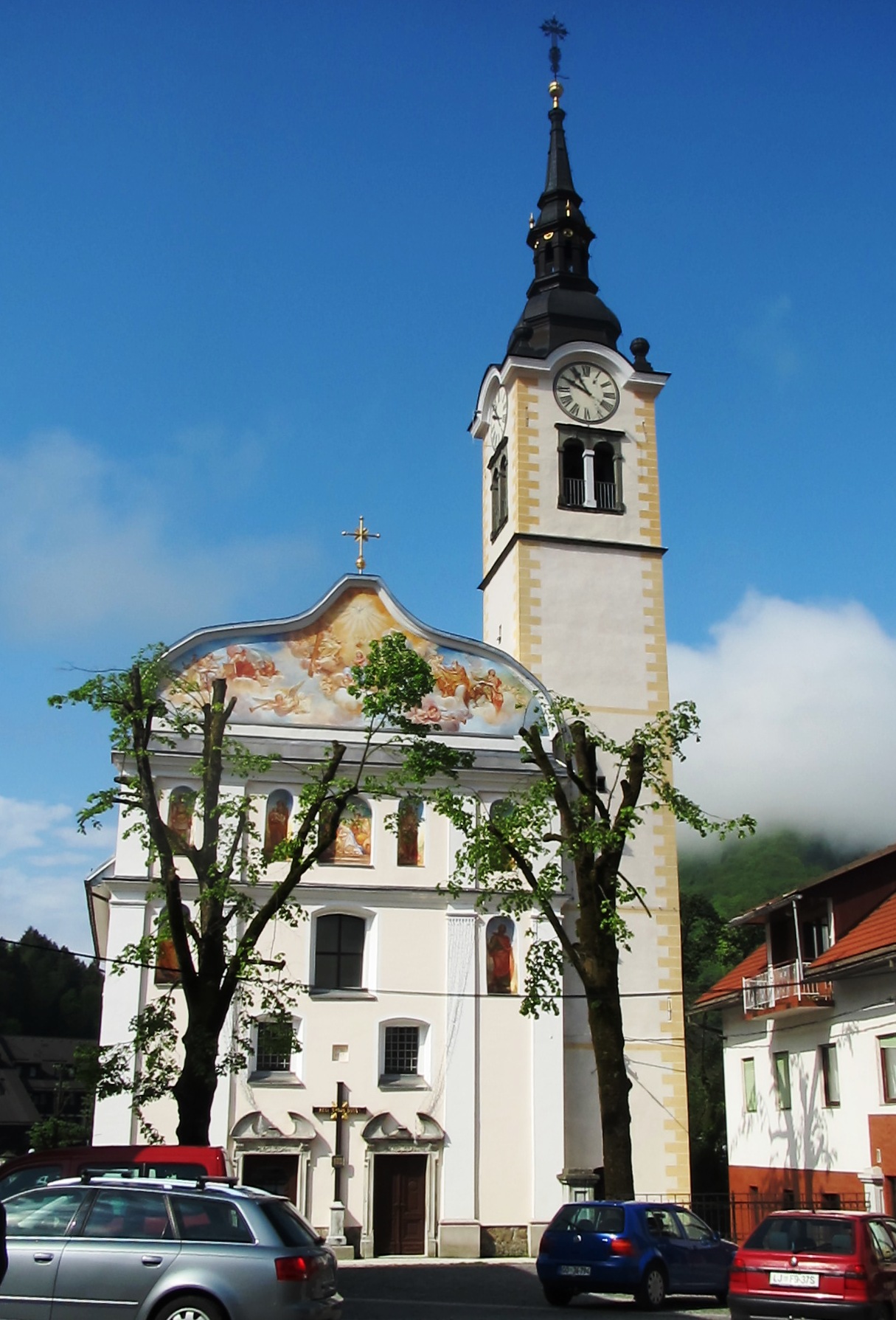Cerkno on:
[Wikipedia]
[Google]
[Amazon]
Cerkno (; it, Circhina; ger, Kirchheim) is a small town in the Littoral region of
 Cerkno is the site of a
Cerkno is the site of a
 The
The Koper Diocese list of churches
Cerkno at Geopedia
Cerkno municipal site
{{Authority control Populated places in the Municipality of Cerkno
Slovenia
Slovenia ( ; sl, Slovenija ), officially the Republic of Slovenia (Slovene: , abbr.: ''RS''), is a country in Central Europe. It is bordered by Italy to the west, Austria to the north, Hungary to the northeast, Croatia to the southeast, and ...
.
It has around 2,000 inhabitants and is the administrative centre of the Cerkno Hills. It is the seat of the Municipality of Cerkno
The Municipality of Cerkno ( sl, Občina Cerkno) is a municipality in the Littoral region of Slovenia.
The seat of the municipality is the town of Cerkno. The municipality has around 5,000 people.
History
Historically, the Cerkno Hills belonged ...
.
Cerkno is a small but important local cultural center in the traditional Littoral region near Idrija. It is known for the '' Laufarija'' carnival
Carnival is a Catholic Christian festive season that occurs before the liturgical season of Lent. The main events typically occur during February or early March, during the period historically known as Shrovetide (or Pre-Lent). Carnival t ...
, a spring festival with carved wooden masks; for Franja Partisan Hospital
Franja Partisan Hospital ( sl, Partizanska bolnica Franja) was a secret World War II hospital at Dolenji Novaki near Cerkno in western Slovenia. It was run by the Slovene Partisans from December 1943 until the end of the war as part of a broa ...
(''Partizanska bolnica Franja''); for a Partisan hospital from World War II; and as a ski resort.
Name
Cerkno was attested in written records in 1257 as ''Curchinitz'' (and as ''Chyrchayn'' in 1299, ''Circhinç'' in 1337, and ''Circhiniz'' in 1486). The modern Slovene name is anellipsis
The ellipsis (, also known informally as dot dot dot) is a series of dots that indicates an intentional omission of a word, sentence, or whole section from a text without altering its original meaning. The plural is ellipses. The term origin ...
of ''*Cer—åk—äv—åno (selo/polje)''; literally, 'church (village/field)'. The medieval attestations of the name indicate that the settlement was also once called ''Cerknica''. The name indicates that the place was formerly a church property.
History
Historically, the Cerkno Hills belonged to Tolmin County. In the 16th century, the area came underHabsburg
The House of Habsburg (), alternatively spelled Hapsburg in Englishgerman: Haus Habsburg, ; es, Casa de Habsburgo; hu, Habsburg család, it, Casa di Asburgo, nl, Huis van Habsburg, pl, dom Habsburgów, pt, Casa de Habsburgo, la, Domus Hab ...
rule, and was included in the County of Gorizia and Gradisca. After the end of World War I
World War I (28 July 1914 11 November 1918), often abbreviated as WWI, was List of wars and anthropogenic disasters by death toll, one of the deadliest global conflicts in history. Belligerents included much of Europe, the Russian Empire, ...
, the area was occupied by the Italian Army
"The safeguard of the republic shall be the supreme law"
, colors =
, colors_labels =
, march = ''Parata d'Eroi'' ("Heroes's parade") by Francesco Pellegrino, ''4 Maggio'' (May 4) ...
, and then officially annexed to Italy
Italy ( it, Italia ), officially the Italian Republic, ) or the Republic of Italy, is a country in Southern Europe. It is located in the middle of the Mediterranean Sea, and its territory largely coincides with the homonymous geographical ...
in 1920. Between 1920 and 1943, it was part of the administrative region known as the Julian March
Venezia Giulia, traditionally called Julian March (Serbo-Croatian, Slovene: ''Julijska krajina'') or Julian Venetia ( it, Venezia Giulia; vec, Venesia Julia; fur, Vignesie Julie; german: Julisch Venetien) is an area of southeastern Europe wh ...
. After the Italian armistice
The Armistice of Cassibile was an armistice signed on 3 September 1943 and made public on 8 September between the Kingdom of Italy and the Allies during World War II.
It was signed by Major General Walter Bedell Smith for the Allies and Brigad ...
in September 1943, Cerkno was liberated by the Yugoslav Partisans
The Yugoslav Partisans,Serbo-Croatian, Macedonian, Slovene: , or the National Liberation Army, sh-Latn-Cyrl, Narodnooslobodilačka vojska (NOV), Народноослободилачка војска (НОВ); mk, НародноослободР...
and became one of the most important centres of Partisan resistance in the Slovenian Littoral
The Slovene Littoral ( sl, Primorska, ; it, Litorale; german: Küstenland) is one of the five traditional regions of Slovenia. Its name recalls the former Austrian Littoral (''Avstrijsko Primorje''), the Habsburg possessions on the upper Adri ...
.
Mass grave
 Cerkno is the site of a
Cerkno is the site of a mass grave
A mass grave is a grave containing multiple human corpses, which may or may not be identified prior to burial. The United Nations has defined a criminal mass grave as a burial site containing three or more victims of execution, although an exact ...
associated with the Second World War. The Lajše Mass Grave ( sl, Grobišče Lajše) is located south of the town, in a shaft on the edge of the woods on the eastern slope of Lajše Hill. It contains the remains of 14 civilian victims (one escaped) that were suspected of anti-communist activity and were murdered on 6 February 1944 by the Partisans. They were killed in revenge for an attack on a Communist Party training school in Cerkno on 27 January 1944 that left 47 dead.
Churches
parish church
A parish church (or parochial church) in Christianity is the church which acts as the religious centre of a parish. In many parts of the world, especially in rural areas, the parish church may play a significant role in community activities, ...
in the town is dedicated to Saint Anne
According to Christian apocryphal and Islamic tradition, Saint Anne was the mother of Mary and the maternal grandmother of Jesus. Mary's mother is not named in the canonical gospels. In writing, Anne's name and that of her husband Joachim come o ...
and belongs to the Diocese of Koper. The church consist of a rectangular presbytery, a wide rectangular nave, and a belfry north of the front wall. The church dates from 1714 and has been attributed to the builder Matija Maček (c. 1657–1737) from the Poljane Valley
Poljane may refer to the following places:
In Kosovo:
* Poljane, Istok, a settlement in the Municipality of Istok
In Serbia:
* Poljane (Obrenovac), a village in the Municipality of Obrenovac
In Slovenia:
* Dolenje Poljane, a settlement in th ...
. A second church in the settlement is dedicated to Saint Bartholomew
Bartholomew (Aramaic: ; grc, Βαρθολομαῖος, translit=Bartholomaîos; la, Bartholomaeus; arm, Բարթողիմէոս; cop, ⲃⲁⲣⲑⲟⲗⲟⲙⲉⲟⲥ; he, בר-תולמי, translit=bar-Tôlmay; ar, بَرثُولَماو٠...
.Notable people
Notable people that were born or lived in Cerkno include: *France Bevk
France Bevk () (17 September 1890 – 17 September 1970) was a Slovene writer, poet and translator. He also wrote under the pseudonym Pavle Sedmak.
Biography
Bevk was born in the mountain village of Zakojca (Coizza during Italian rule, now p ...
(1890–1970), writer
* (1854–1931), Archbishop of Gorizia
The Roman Catholic Archdiocese of Gorizia ( la, Archidioecesis Goritiensis) is an archdiocese of the Latin Church of the Catholic Church in Italy. The archiepiscopal see of Gorizia ( Friulian: ''Gurizza/Gurizze''; german: Görz; sl, Gorica) w ...
* Milica Kacin-Wohinz (1930–), historian
* (1947–), historian
* Franc Močnik (1814–1892), mathematician
* Janez Podobnik (1959–), politician
* (1960–), politician
* Rafael Podobnik (1942–), photographer
See also
Cerkno Ski ResortReferences
External links
*Cerkno at Geopedia
Cerkno municipal site
{{Authority control Populated places in the Municipality of Cerkno